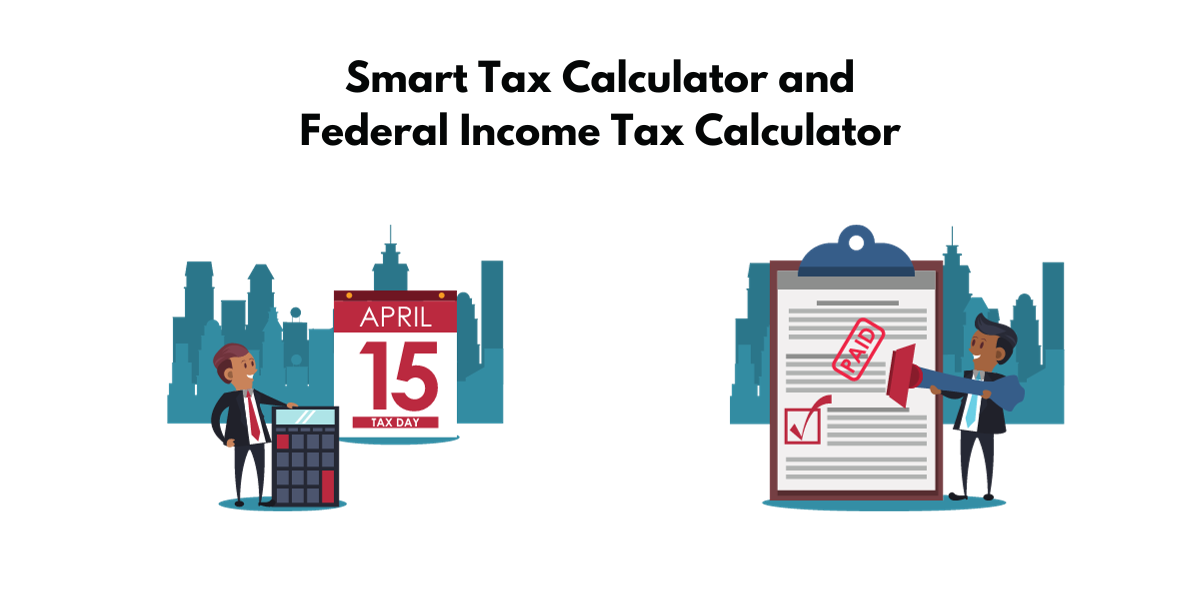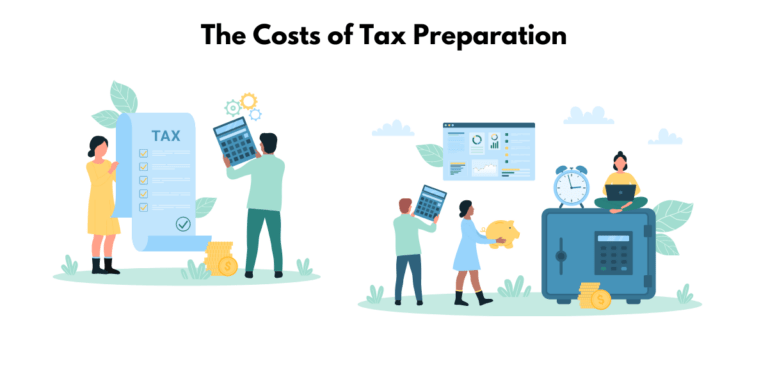Smart Tax: How to Use Smart Tax Calculator and Federal Income Tax Calculator
Kick-Off: Understanding Federal Income Tax
An Overview of Federal Income Taxes
For anyone earning income in the U. S., keeping track of the federal personal income tax – including the ever-so-important tax deadline – is an unavoidable reality. Administered by the Internal Revenue Service (IRS), federal income tax serves as the largest source of revenue to the U.S. federal government. It’s required under the law that all working Americans must file a tax return with the IRS each year—holding whether you reside in Massachusetts, Texas, or elsewhere. In addition to this, most people also pay taxes throughout the year in the form of payroll taxes. We regularly check for any updates to the latest tax rates and regulations. The calculated income taxes are based on tax rates that normally range between 10% and 37%.
How Are You Taxed?
The process of calculating federal income tax begins with understanding your Adjusted Gross Income (AGI). Your AGI is your total income for the year, minimized by specific reductions, such as contributions to your 401(k) or health savings account.
From AGI, we deduct exemptions and deductions – either itemized or standard – to determine your taxable income. Exemptions can be claimed for each taxpayer as well as dependents, such as one’s spouse or children.
Finally, your taxable income is applied to the respective tax brackets based on your filing status to calculate your federal income taxes owed for the year. However, your location will determine whether you owe local and/or state taxes.

Navigating Your Income Tax
Your Federal Income Tax Comparison
Understanding your federal income tax obligations can be a daunting task without the right tools. The Smart Tax Calculator is designed to help you make an accurate comparison of your tax liabilities. It gauges your marginal and effective federal income tax rates and provides a comprehensive picture of your expected tax payments.
Your marginal tax rate is essentially the highest tax rate you pay on your income; it’s the rate on the last dollar you earn. However, your effective tax rate is the average rate at which your income is taxed; it considers the amount of tax you pay as a percentage of your total income. These figures can provide a clear perspective of your tax obligations in correlation to your income.
A balanced comparison of these rates using the Smart Tax calculator can help you strategize how to optimally manage your taxable income.
The Breakdown of Your Income Taxes
The breakdown of your income taxes is a systematic process. First, we calculate your Adjusted Gross Income (AGI) by factoring in your total income and then reducing it by certain items such as contributions to your 401(k) or health savings account.
Subsequently, we subtract exemptions and deductions from your AGI to get your taxable income. These deductions can either be itemized or standard, and exemptions can be claimed for each taxpayer and dependents, like your spouse or children.
Based on your filing status – Single, Married Filing Jointly, Married Filing Separately, Head of Household – your taxable income is then applied to the respective tax brackets to determine the federal income tax you owe for that particular year.
Remember, your location can influence whether you owe local and/or state taxes, thus these are also considered in your tax breakdown. Understanding each element and phase of this process can offer a clear picture of how your tax obligation emerges. The Smart Tax Calculator is your financial partner that makes this complex journey a comfortable ride.

Your Allies: Exemptions and Deductions
Calculating Taxable Income Using Exemptions and Deductions
Calculating your taxable income may initially seem confusing, but with the right understanding of exemptions and deductions, you can get a fairly precise estimation. Here’s a detailed walkthrough:
Start by determining your Adjusted Gross Income (AGI). This involves taking your total income and reducing it by specific items, like contributions to your 401(k), alimony payments, or student loan interest.
Next, you subtract from the AGI any exemptions and deductions you qualify for, which can include things like the standard deduction, itemized deductions, or business expenses for the self-employed. Keep in mind personal exemptions have been eliminated at the federal level since 2018 due to the tax plan signed in late 2017.
After applying these exemptions and deductions, the resulting figure is your taxable income. This figure is then applied to the relevant tax brackets, which range from 10% to 37% based on your income level and filing status. This computation gives you an understanding of the amount you owe in federal income tax.
The Smart Tax calculator can be an extremely useful tool in automating this process and calculating your taxable income, helping to ensure accuracy while saving time and effort.
Federal Standard Deductions
Under the U.S. tax law, every taxpayer is entitled to claim a certain amount of standard deductions, which significantly reduces the amount of income that can be taxed. These deductions vary depending on your tax filing status. For the tax year 2022, the standard deduction amounts are as follows:
- Single: $12,950
- Married, Filing Jointly: $25,900
- Married, Filing Separately: $12,950
- Head of Household: $19,400
Hence, if you’re a single filer and your income is $40,000, once you apply the standard deduction of $12,950, you’ll only pay taxes based on a taxable income of $27,050.
However, note that some taxpayers could find it advantageous to itemize their deductions. With itemization, you subtract certain eligible expenses from your AGI, which include payments for student loan interest, contributions to an IRA, health insurance contributions if you’re self-employed, and more.
Whether you should use the standard deduction or itemize your deductions largely depends on the amount of each. The Smart Tax calculator can provide insight into which option would yield a more desirable outcome in your unique situation.

Deep Dive into Federal Tax Brackets
Overview of Income Tax Brackets
Income tax brackets are ranges of income that are subject to a certain income tax rate. In a progressive system like the United States, the tax rate increases as the taxable income increases. For the tax year 2022, the federal income tax rates range from 10% to 37%, divided across seven tax brackets. Here’s a brief overview:
- 10% on income of $0 to $10,275 for Single filers
- 12% on income over $10,275 to $41,775
- 22% on income over $41,775 to $89,075
- 24% on income over $89,075 to $170,050
- 32% on income over $170,050 to $215,950
- 35% on income over $215,950 to $539,900
- 37% on income over $539,900
It’s essential to keep in mind that these rates apply to the income within that specific range or bracket. A common misconception is that moving into a higher tax bracket will apply that rate to all income, but that isn’t the case. Using a tax calculator, like the Smart Tax calculator, can help simplify and automate the process of applying these progressive tax rates.
Total Estimated Tax Burden
Your total estimated tax burden is not merely the federal income tax you pay. It’s essential to consider other taxes, such as state tax, local tax, sales tax, property tax, and more. When combined, these taxes form your overall tax burden.
Your total tax burden can be broken down as follows:
- Income Tax: Varies from 10% to 37%, depending on your tax bracket.
- State Tax: Varies by state, ranging from 0% to 13.3%.
- Local Tax: Some local governments also levy income tax.
- Sales Tax: Varies against state and local taxes but is applied to purchased goods or services.
- Fuel Tax: Imposed by both federal and state governments, varies by location.
- Property Tax: Varies depending upon the assessed property value and local tax rates.
These, together, create your total estimated tax burden which provides a more complete understanding of your overall tax liabilities, helping you plan effectively. The handy Smart Tax calculator can help you estimate this amount accurately, enabling you to plan your tax strategy efficiently.

Electronics at Your Service: Automating Taxes
Making Taxes Easier With Features That You Want
At Smart Tax, we believe in leveraging technology to simplify your tax filing process. Offering an array of features, we focus on making every taxpayer’s experience easy, efficient, and error-free. On top of that, we highly value your feedback, available via email at any point.
- Variety of functionalities: Our platform comes with various capabilities that guide you through each step of the tax preparation process, whether you’re filing as single, married, or self-employed.
- Guidance on deductions and credits: Our intelligent calculator helps you identify potential opportunities for tax deductions and credits that can further reduce your tax liability.
- Data import: Should you have filed online last year elsewhere or with us, save your time with our data import feature. It pulls in relevant information from your previous return, ensuring consistency and saving time.
- Flexible accessibility: With our superior, cloud-powered platform, you can access our services anytime, anywhere. Whether you’re at home, at work, or on the go, we’re ready to assist and would appreciate any feedback via email!
- Transparent pricing: We believe in no-surprise pricing. With a flat-rate fee, you know exactly what you pay up-front, enabling you to budget for tax preparation services beforehand.
Reporting Outgoing Invoices & Automating VAT Returns
With the advent of digital technology, automating tasks has become the new norm. However, when it comes to tax, it’s still a challenge for many to switch from manual processes.
Smart Tax focuses on automating subtasks or the entire Accounts Payable (AP) process in response to this issue. We have developed software solutions that allow for seamless submission of invoices for taxation. These solutions, which are built on our decades of experience in tax consulting, help to automate the reporting of outgoing invoices to the National Tax and Customs Administration of Hungary’s (“NAV”) Online Invoicing system.
Furthermore, our navigation through the accounting and taxation software ecosystem aids in automating VAT returns. Smart Tax’s solutions in form filling and submitting software support make VAT returns quick, thorough, and accurate. With the right technology support, you can make your VAT reporting and return process more efficient, accurate, and less time-consuming.
Maximize your tax savings while simplifying the paperwork and administrative requirements through Smart Tax.
Employer Type and Federal Income Tax
Federal Income Tax: W-2 Employees
W-2 employees are workers who receive W-2 tax forms from their employers. These forms report the annual salary paid during a tax year and any withheld payroll taxes.
These withheld taxes cover the Social Security tax, income tax, Medicare tax, and other state income taxes that benefit W-2 employees. Employers and employees split the Federal Insurance Contribution Act (FICA) taxes that fund the Social Security and Medicare programs. The FICA rate due every pay period is usually 15.3% of an employee’s wages. This tax payment is divided in half between the employer and the employee.
By automating W-2 details and calculations using a smart tax solution, W-2 employees can save time, ensure accuracy, and simplify their federal income tax filing. At Smart Tax, we facilitate efficient W-2 tax calculation, guiding employees throughout the process.
Federal Income Tax: 1099 Employees
In contrast to W-2 employees, 1099 workers, or independent contractors, are considered self-employed. As such, they must shoulder the entire tax responsibility, meaning they are responsible for both the employee and employer portions of the Federal Insurance Contributions Act (FICA) taxes, which amount to a combined 15.3% rate.
Such individuals receive Form 1099 from their clients or employers if they were paid over $600 during the tax year. These forms detail the income earned but don’t showcase any tax withholdings because 1099 workers don’t have any federal tax deducted from their pay.
Because of this, 1099 workers must diligently track their taxable income and prepay their taxes to the IRS, usually every quarter. This process can be made easier and more precise with the Smart Tax calculator, which provides accurate estimates and allows you to plan for your tax liabilities effectively.

Decoding Tax Credits & Refunds
How to Calculate Federal Tax Credits
Tax credits are a way of reducing the amount of taxes you owe on a dollar-for-dollar basis. These are only awarded under certain circumstances, and different types of credits have different requirements.
The calculation of tax credits varies depending on the type. Some of the common federal income tax credits are:
- Earned Income Tax Credit (EITC): A refundable tax credit for low to moderate-income taxpayers, especially those with children. The maximum credit for tax year 2022 is $6,935 for taxpayers with three or more children.
- Child and Dependent Care Credit: A nonrefundable credit worth up to $8,000 for two or more children and up to $4,000 for one child. It covers childcare expenses incurred while working or seeking work.
- The American Opportunity Tax Credit: A partially refundable education credit, offering up to $2,500 annually for tuition, enrolment fees, course materials, and other qualified expenses in the first four years of post-secondary education.
To calculate these credits, you must meet the eligibility requirements and then subtract the amount of the credit from your tax liability. However, note that nonrefundable tax credits cannot reduce your liability to less than zero. The Smart Tax calculator can help you calculate these credits based on your circumstances swiftly and accurately.
Calculating Your Tax Refund
The calculation of a tax refund begins with the determination of your tax liability — the total amount of tax you owe for the year. This is done by calculating your taxable income and applying the relevant tax rates based on the federal tax tables.
Once your tax liability is established, you’ll compare this figure to the total amount of taxes withheld from your paychecks and any tax credits you may claim. If the total tax paid (including withholdings and credits) is more than your tax liability, you’ll receive a refund of the difference.
For example, if your total tax liability is $5,000 and you’ve had $6,000 withheld from your paycheck over the year, you’d be eligible for a $1,000 refund ($6,000 – $5,000).
Remember, similar to most financial matters, tax refunds can be complex due to the individual nature of tax obligations. The use of tools like the Smart Tax calculator can simplify calculating your potential refund and help you plan for future tax obligations.

FAQs on Federal Income Tax
How does the Smart Tax calculator work?
The Smart Tax Calculator simplifies the complex aspects of tax computation through automation. It is designed to bring ease, accuracy, and understanding to your tax filing experience. Here’s how it works:
First, you input necessary details related to your income, filing status, deductions, and exemptions. Then, the Smart Tax calculator uses this information to determine your Adjusted Gross Income (AGI).
Subtracting any exemptions and deductions from your AGI, the calculator identifies your taxable income. Applying the relevant tax brackets based on your filing status to this taxable income, the Smart Tax calculator estimates your federal income tax for the year.
Finally, by applying any tax credits you may be eligible for and comparing the resulting figure to the total amount of taxes withheld from your paycheck, the Smart Tax calculator provides an estimate of your tax refund or the amount you owe.
In essence, the Smart Tax calculator does all the heavy lifting, making tax calculations more efficient and error-free.
Can I import my data into the Smart Tax calculator?
Absolutely! At Smart Tax, our goal is to streamline your tax filing process and save as much time as possible. Part of this involves allowing you to import past tax data into the Smart Tax calculator.
Whether you filed with us last year or elsewhere, our system can pull relevant data from a PDF of your previous year’s return when prompted. Information such as your name, address, social security number, occupation, and filing status can be automatically filled in, saving you time and effort.
This feature not only makes the process more efficient but also ensures consistency in your records and minimizes the chance of manual data entry errors. So, whether you used another online tax service last year or filed directly with us, you can opt for time-saving data import with the Smart Tax calculator.
What other services does the Smart Tax calculator provide?
Beyond basic tax calculation, the Smart Tax Calculator offers a broad range of services designed to support you in various aspects of tax planning and filing. Here’s a snapshot:
- Guidance on Deductions and Credits: The Smart Tax calculator helps you identify potential tax deductions and credits, optimizing your tax savings opportunities.
- Reporting and Automation: Streamlining the submission of outgoing invoices for taxation. Automating VAT returns through smart form filling and submission functionalities.
- Income Tax Comparison: Analyzing your marginal and effective tax rates, providing insights into your federal income tax obligations.
- Support for Different Filer Types: Whether you’re a W-2 employee or a 1099 independent contractor, we’ve got you covered.
- Smart Tax: How to Use Smart Tax Calculator and Federal Income Tax Calculator - December 5, 2023
- Collateralization: 5 FACTS you should know about collateralization - May 1, 2023
- A Comprehensive Guide to Forensic Accounting: Definition, services, and more - December 15, 2022





